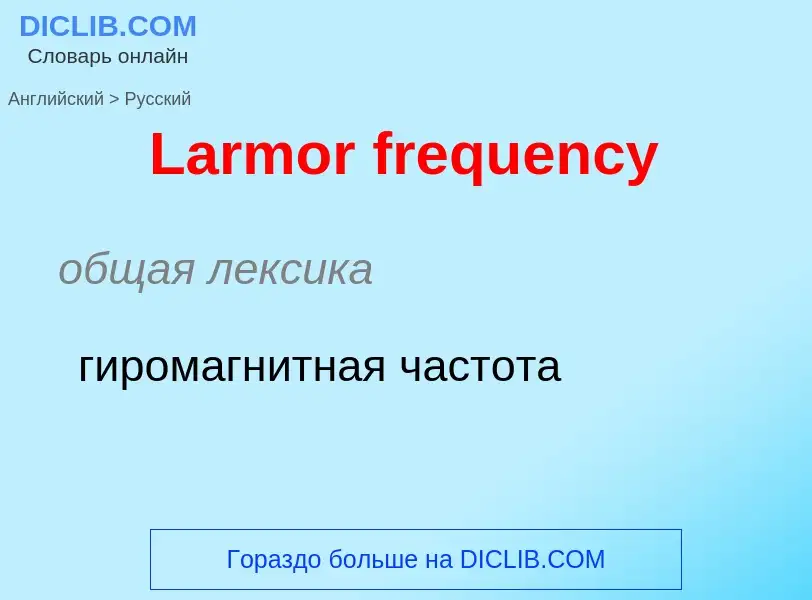Перевод и анализ слов искусственным интеллектом ChatGPT
На этой странице Вы можете получить подробный анализ слова или словосочетания, произведенный с помощью лучшей на сегодняшний день технологии искусственного интеллекта:
- как употребляется слово
- частота употребления
- используется оно чаще в устной или письменной речи
- варианты перевода слова
- примеры употребления (несколько фраз с переводом)
- этимология
Larmor frequency - перевод на русский
общая лексика
гиромагнитная частота
математика
вероятность события
Википедия
In physics, Larmor precession (named after Joseph Larmor) is the precession of the magnetic moment of an object about an external magnetic field. The phenomenon is conceptually similar to the precession of a tilted classical gyroscope in an external torque-exerting gravitational field. Objects with a magnetic moment also have angular momentum and effective internal electric current proportional to their angular momentum; these include electrons, protons, other fermions, many atomic and nuclear systems, as well as classical macroscopic systems. The external magnetic field exerts a torque on the magnetic moment,
where is the torque, is the magnetic dipole moment, is the angular momentum vector, is the external magnetic field, symbolizes the cross product, and is the gyromagnetic ratio which gives the proportionality constant between the magnetic moment and the angular momentum. The angular momentum vector precesses about the external field axis with an angular frequency known as the Larmor frequency,
- ,
where is the angular frequency, and is the magnitude of the applied magnetic field. is (for a particle of charge ) the gyromagnetic ratio, equal to , where is the mass of the precessing system, while is the g-factor of the system. The g-factor is the unit-less proportionality factor relating the system's angular momentum to the intrinsic magnetic moment; in classical physics it is just 1. The Larmor frequency is independent of the angle between and .
In nuclear physics the g-factor of a given system includes the effect of the nucleon spins, their orbital angular momenta, and their couplings. Generally, the g-factors are very difficult to calculate for such many-body systems, but they have been measured to high precision for most nuclei. The Larmor frequency is important in NMR spectroscopy. The gyromagnetic ratios, which give the Larmor frequencies at a given magnetic field strength, have been measured and tabulated here.
Crucially, the Larmor frequency is independent of the polar angle between the applied magnetic field and the magnetic moment direction. This is what makes it a key concept in fields such as nuclear magnetic resonance (NMR) and electron paramagnetic resonance (EPR), since the precession rate does not depend on the spatial orientation of the spins.


![Larmor at the Fourth Conference International Union for Cooperation in Solar Research at [[Mount Wilson Observatory]], 1910 Larmor at the Fourth Conference International Union for Cooperation in Solar Research at [[Mount Wilson Observatory]], 1910](https://commons.wikimedia.org/wiki/Special:FilePath/Delegates to the Fourth Conference International Union for Cooperation in Solar Research at Mount Wilson Observatory.jpg?width=200)






![Hz]] Hz]]](https://commons.wikimedia.org/wiki/Special:FilePath/Pendulum-no-text.gif?width=200)
